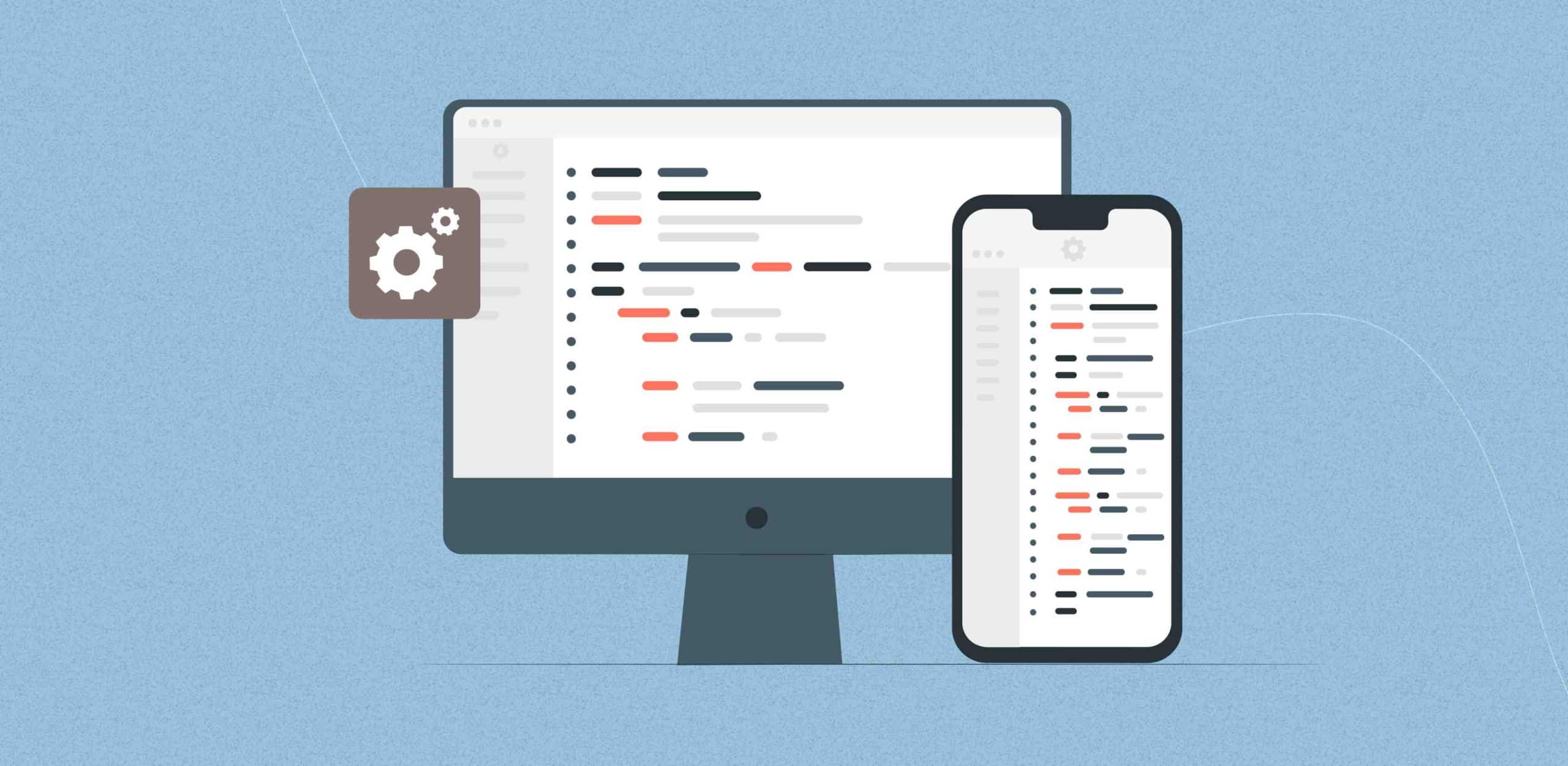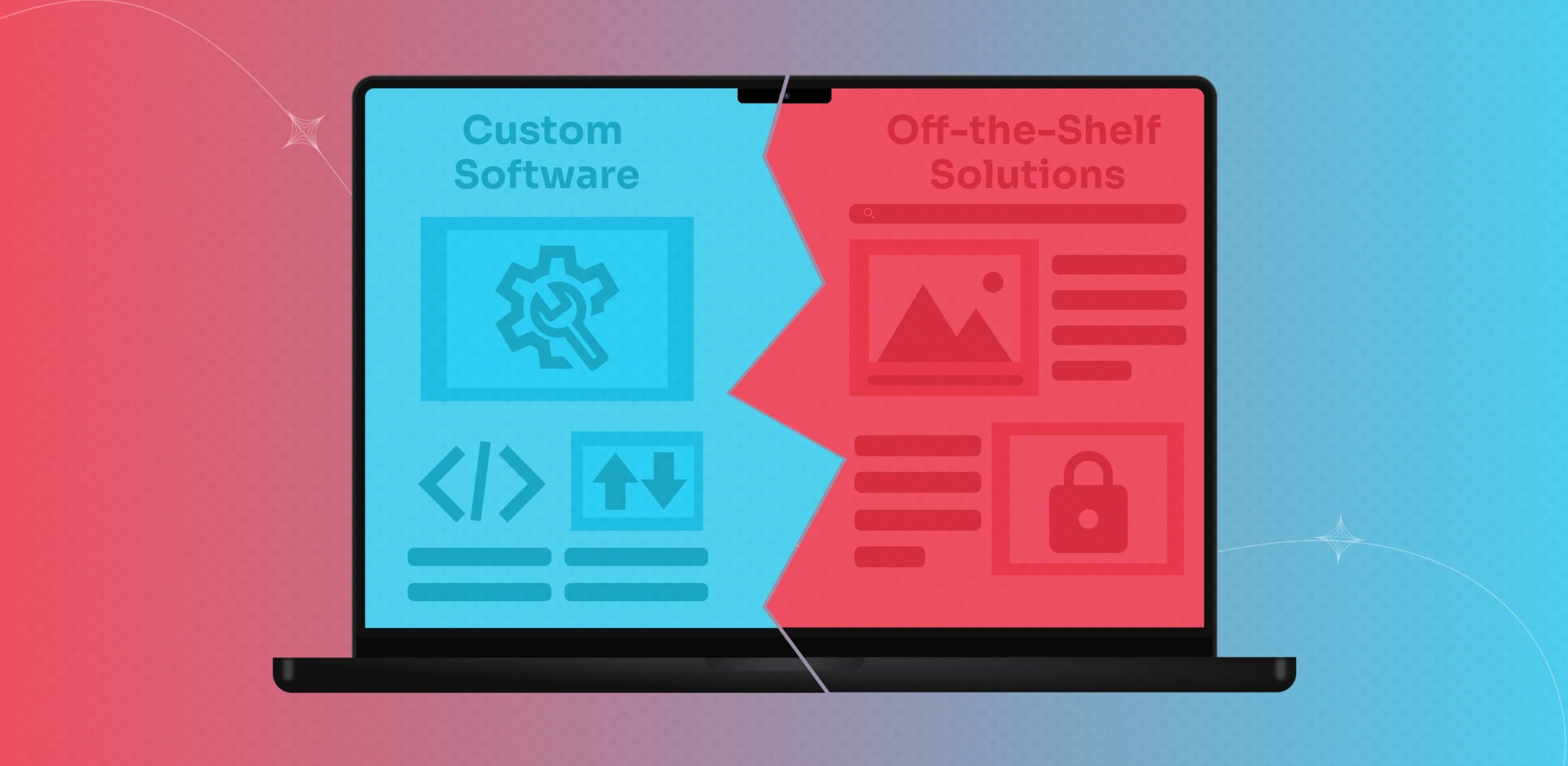Introduction
Generative AI development is transforming the digital landscape, empowering businesses to automate creativity, enhance productivity, and unlock entirely new possibilities. From generating content and writing code to designing products and streamlining customer interactions, generative AI solutions are revolutionizing how organizations operate and compete in the modern world.
However, bringing these innovations to life isn’t as simple as flipping a switch. Successful implementation demands a clear strategy, robust data foundations, expert technical execution, and the right development partner.
In this blog, we present a comprehensive AI solution development roadmap, offering a step-by-step guide to the generative AI implementation process followed by top companies. Whether you’re a growing startup or an established enterprise, understanding how a generative AI development company implements AI solutions is essential to achieving scalable, future-ready results.
Step 1 – Understanding Business Goals and Use Cases
Every effective generative AI development project starts with one crucial ingredient: clarity. Before diving into data models or coding environments, a successful generative AI development company focuses on gaining a deep understanding of the client’s business objectives, challenges, and aspirations. This foundational phase sets the direction for the entire AI solution development roadmap, ensuring that the final solution delivers measurable value.
Get to know more on Generative AI use cases and applications.
Identify the Problem Statement
Generative AI offers enormous potential — but only when applied to the right problem. The first step is to clearly define the business problem that AI is expected to solve. This could be a bottleneck in operational efficiency, a gap in customer engagement, or a need for innovation in product design.
For example:
- A publishing firm may struggle with the time and cost of creating content manually.
- A SaaS company may need to enhance customer service without hiring additional agents.
- A marketing agency may want to produce creative variations of campaigns at scale.
A seasoned AI development company will facilitate discovery sessions with key stakeholders to uncover these pain points. By asking the right questions and analyzing internal workflows, the team can pinpoint areas where generative AI solutions can make the most impact.
This process results in a clearly defined problem statement — one that outlines the current challenge, the desired outcome, and the constraints or expectations associated with the solution.
- Pro Tip: A clearly defined problem statement reduces ambiguity and aligns both business and technical teams from the outset.
Define Use Cases
Once the problem is understood, the next step is to define specific AI use cases that address it. This is where the generative AI implementation process begins to take shape. Each use case must be grounded in real business needs and operational relevance.
Here are some practical use case examples commonly implemented through generative AI development services:
- Automated Report Generation: Generative AI models can produce financial summaries, executive dashboards, or compliance reports using structured data, saving hours of manual effort.
- AI-Driven Customer Support Bots: Natural Language Processing (NLP) models are used to build intelligent chatbots capable of handling routine queries, freeing up human agents for complex issues.
- Code Generation for Development Teams: AI tools trained on large codebases can help software engineers autocomplete functions, detect bugs, or generate boilerplate code faster.
- Synthetic Data Creation: In industries like healthcare or finance where real data is sensitive or limited, generative models can produce synthetic datasets that retain statistical properties of the original, helping in model training without breaching compliance.
Each use case should be evaluated for feasibility, potential ROI, and alignment with the company’s strategic direction. In many cases, a phased approach is adopted — starting with a pilot use case to validate the AI solution before scaling it across departments.
- Expert Insight: Prioritizing high-impact, low-complexity use cases is a smart way to demonstrate early wins and build stakeholder confidence.
Set Measurable KPIs
A goal without a metric is just a wish. Once use cases are defined, it’s essential to establish Key Performance Indicators (KPIs) that measure the success of the AI implementation. These metrics serve as a compass for both the client and the generative AI development company, guiding decisions and validating outcomes.
Depending on the use case, KPIs may include:
- Increased Productivity: Number of hours saved per task or team
- Cost Reduction: Decrease in operational or resource expenses
- Accuracy Rates: Improved precision in generated content, code, or customer responses
- Customer Satisfaction: Uplift in CSAT or NPS scores due to AI-driven support
- Time-to-Market: Reduction in the time taken to create marketing materials, products, or reports
These KPIs aren’t static — they evolve as the AI system matures and business goals shift. That’s why an experienced partner will include continuous monitoring and refinement as part of the broader AI development company process.
Read the top use cases for Generative AI: Insights from a Leading Generative AI Development Company
Contact us now to discuss your project and get a personalized consultation.
Step 2 – Data Strategy and Preparation
In generative AI development, data is not just an input — it’s the foundation upon which the entire solution is built. The quality, structure, and relevance of your data directly impact the performance and reliability of your generative AI models. No matter how advanced the architecture, a flawed data pipeline can derail even the most promising AI initiatives.
A well-planned data strategy is therefore essential to every successful AI solution development roadmap. This step involves more than just collecting data; it’s about sourcing the right data, transforming it effectively, and ensuring it complies with regulations and business requirements.
Data Collection & Aggregation
The first stage of the generative AI implementation process begins with identifying and aggregating data from diverse sources. Since generative AI systems are often designed to perform tasks like writing, summarizing, creating images, or answering questions, they require large volumes of structured and unstructured data to learn from.
Common Data Sources Include:
- Internal Systems: CRMs, ERPs, databases, customer support logs, emails, chat transcripts, and product documentation.
- External Sources: Open-source repositories, licensed data feeds, and APIs (e.g., Twitter, Reddit, Wikipedia).
- User-Generated Content: Surveys, forms, user feedback, social media posts.
- Public Datasets: Kaggle, Hugging Face datasets, Common Crawl, and other industry-specific datasets.
At this stage, the goal is to collect a diverse and representative dataset that matches the intended use cases of your AI application. For example, a generative AI development company building a conversational agent will prioritize collecting customer dialogues, FAQs, and real-time chat logs.
To avoid silos and fragmentation, the data is aggregated into a centralized, scalable storage environment — typically a cloud-based data lake or warehouse — that supports seamless access, versioning, and transformation.
Data Cleaning & Annotation
Once the raw data is collected, it undergoes cleaning and annotation — two essential steps that dramatically affect the model’s performance, accuracy, and fairness.
Data Cleaning
Cleaning ensures the dataset is free of:
- Inconsistencies and duplicates
- Null or irrelevant values
- Formatting errors
- Outliers or anomalies that may skew learning
ETL pipelines (Extract, Transform, Load) are used to automate this process. Data is extracted from source systems, transformed into a usable format, and loaded into training-ready storage. The goal is to create a high-quality dataset that’s consistent, accurate, and optimized for training.
Data Annotation
For generative AI to understand context, semantics, and intent, the data must be labeled with precise metadata. Annotation involves tagging content with attributes like:
- Intent labels for chatbots (e.g., “order status” vs. “refund request”)
- Entity recognition (e.g., names, dates, product IDs)
- Sentiment (e.g., positive, negative, neutral)
- Tone and style (e.g., formal, casual, technical)
Depending on the project, annotation can be manual (done by human experts), semi-automated (with tools like Prodigy, Labelbox, or Amazon SageMaker Ground Truth), or fully automated using pre-trained AI models.
High-quality annotation helps generative AI development services fine-tune large language models (LLMs), reduce hallucination, and improve contextual relevance in the outputs.
Ensure Data Privacy & Compliance
One of the most critical — and often overlooked — parts of any AI development company process is ensuring that all data usage aligns with legal and ethical standards. This is particularly crucial in regulated industries such as healthcare, finance, and education.
Key Compliance Considerations:
- GDPR (General Data Protection Regulation): Ensures user data privacy in the EU.
- HIPAA (Health Insurance Portability and Accountability Act): Protects health-related data in the US.
- CCPA (California Consumer Privacy Act): Safeguards consumer data rights in California.
- Industry-Specific Standards: ISO/IEC 27001, SOC 2, PCI-DSS, etc.
Best Practices Followed by Top Generative AI Development Companies:
- Data Anonymization: Personally identifiable information (PII) is stripped or masked to protect user identities.
- Role-Based Access Control (RBAC): Data access is limited to authorized personnel only.
- Audit Trails: Every data access or change is logged for traceability.
- Encryption in Transit and at Rest: All data is encrypted using industry-grade protocols to prevent breaches.
Ethical AI also goes beyond legal compliance. It involves minimizing bias, preventing model misuse, and ensuring transparency and explainability in how data is used and interpreted by the AI system.
Step 3 – Model Selection and Customization
Once the data has been collected, cleaned, and prepared, the next critical stage in the AI development company process is choosing and tailoring the right model for your business needs. This step is where theoretical planning transforms into practical execution, as the backbone of your generative AI development initiative is established.
The goal here is not just to select a capable model — it’s to choose or build one that aligns perfectly with the use case, scales efficiently, and delivers measurable business value.
Select the Right Model Architecture
In the world of generative AI development, there are several powerful model architectures to choose from, each serving distinct use cases and industries. A skilled generative AI development company evaluates the problem statement, data type, and required output to determine the most suitable model type.
Large Language Models (LLMs)
These models, such as OpenAI’s GPT, Meta’s LLaMA, or Google’s PaLM, are ideal for tasks involving natural language processing. Use cases include:
- Text generation (blogs, emails, code)
- Chatbots and virtual assistants
- Text summarization
- Semantic search
LLMs are particularly useful when conversational or contextual understanding is essential, and they form the core of many modern enterprise-grade AI solutions.
Generative Adversarial Networks (GANs)
GANs are a class of neural networks used primarily for:
- Image generation
- Style transfer
- Synthetic video creation
- Design and simulation in fashion, architecture, and gaming
They work by pitting two networks — a generator and a discriminator — against each other to create increasingly realistic outputs.
Diffusion Models
Rapidly gaining popularity in creative fields, diffusion models are used for high-resolution content creation. Models like Stable Diffusion and DALL·E 2 can generate:
- Photo-realistic images
- Digital art and illustrations
- Product mockups
Their ability to produce coherent visuals from text prompts has made them indispensable for marketing, advertising, and design teams.
Pretrained Models vs. Custom Models
A key decision in the generative AI implementation process is whether to use a pretrained model or develop a custom model from scratch.
Pretrained Models
These models have been trained on massive datasets (like Common Crawl or Wikipedia) and are ready to be adapted for general use cases. The advantages include:
- Faster time to market
- Lower development costs
- Reduced computational burden
However, they may lack domain-specific expertise, resulting in outputs that feel generic or imprecise.
Custom or Fine-Tuned Models
When businesses require high accuracy or operate in niche domains (e.g., legal, medical, or technical sectors), fine-tuning a base model or building a new one becomes necessary. Benefits include:
- Improved contextual understanding
- Better performance on specialized tasks
- Tailored responses aligned with brand tone and terminology
A skilled AI development company will assess factors like data availability, industry context, and budget before recommending the right approach.
Model Optimization for Performance and Cost
Choosing a model is just the beginning. Optimizing it for real-world deployment is equally important.
Generative models can be resource-intensive, both in terms of compute power and cost. Without optimization, latency may increase and scalability could suffer — two critical pain points, especially in production environments.
Top generative AI development companies implement various optimization techniques to ensure smooth performance:
Knowledge Distillation
A smaller model (student) is trained to replicate the behavior of a larger, more complex model (teacher), preserving accuracy while reducing size and inference time.
Quantization
This process reduces the precision of model weights (e.g., from 32-bit to 8-bit), resulting in lighter models with minimal impact on quality — ideal for deployment on edge devices or limited-resource environments.
Pruning and Compression
Redundant neurons or parameters are removed to streamline the model, lowering memory requirements and boosting execution speed.
Caching and Token Limit Management
For language models, managing prompt size and intelligently caching previous conversations can drastically reduce costs and speed up response time.
Cloud-Agnostic Compatibility
Models are containerized and designed for compatibility across AWS, Azure, and GCP — ensuring flexibility and avoiding vendor lock-in during scaling.
Ensuring Ethical and Responsible Model Selection
In addition to performance, modern AI systems must be ethical and fair. The model selection process also involves evaluating:
- Bias in training datasets
- Explainability and transparency
- Cultural and social sensitivity
- Compliance with AI ethics guidelines
This ensures the generative AI solution doesn’t just perform well — it performs responsibly.
Build a Generative AI Model for your business. Read the article to know more.
Step 4 – Building and Training the AI Model
This is the heart of generative AI development — the phase where raw data is transformed into a powerful, intelligent system capable of generating human-like outputs. Once the use case is defined, the data is prepared, and the right model architecture is selected, it’s time to bring the AI solution to life through robust engineering and model training.
Infrastructure Setup: Building the Foundation for Scalable AI
Before any model can be trained, it needs the right infrastructure. Generative AI models, especially large language models (LLMs) or image generators, are compute-intensive and require high-performance environments for effective training and fine-tuning.
Top generative AI development companies leverage cloud platforms like:
- Amazon Web Services (AWS) – Offering scalable GPU instances and services like SageMaker for machine learning workflows.
- Microsoft Azure – With tools like Azure Machine Learning and integrated DevOps pipelines.
- Google Cloud Platform (GCP) – Known for its AI-optimized infrastructure, including TPU (Tensor Processing Unit) support.
In addition to cloud computing, modern AI development also includes:
- Kubernetes for container orchestration and workload automation.
- Docker for packaging AI models and dependencies into reproducible containers.
- CI/CD pipelines to streamline version control, testing, and deployment.
This setup ensures that the AI model can scale efficiently, adapt to various environments, and integrate easily with existing software systems.
Training the Model: Teaching the AI to Think Creatively
With infrastructure in place, the next step is training the model using the curated dataset. This involves feeding the model vast amounts of data so it can learn to understand patterns, predict outcomes, or generate creative outputs — depending on the use case.
During training, developers and data scientists focus on:
- Hyperparameter tuning – Adjusting parameters like batch size, learning rate, and number of training epochs to optimize performance.
- Loss function optimization – Using loss functions like cross-entropy, mean squared error, or custom loss functions to minimize prediction errors.
- Regularization techniques – Methods like dropout, L1/L2 regularization, and early stopping are employed to prevent overfitting, ensuring the model performs well not just on training data, but on unseen data too.
For generative AI development services working with large-scale models, training can range from a few hours (for fine-tuning existing models) to several weeks (for training models from scratch).
Key training techniques may include:
- Transfer learning – Adapting pre-trained models for domain-specific use cases
- Reinforcement learning – Particularly for dialog models that learn from interaction
- Self-supervised learning – For models learning directly from raw, unlabeled data
- Validation and Testing: Ensuring Quality and Reliability
Training is only half the journey. Once the model is built, it needs to be rigorously tested and validated to ensure it delivers consistent, accurate, and useful outputs.
This phase involves:
- Testing against hold-out datasets – These are data samples the model has never seen, helping assess generalization.
- Cross-validation – Dividing the dataset into training and validation sets multiple times to test model stability and reduce variance.
Different metrics are used depending on the nature of the model:
Model Type | Validation Metric |
Text Generation (LLMs) | BLEU, ROUGE, Perplexity |
Image Generation | FID (Fréchet Inception Distance), Inception Score |
Conversational AI | User satisfaction scores, turn accuracy, latency |
Code Generation | Execution correctness, token accuracy |
Additionally, generative AI development companies often employ:
- Human-in-the-loop (HITL) evaluations – Where real users or domain experts review the model’s outputs for accuracy, relevance, and usability.
- Automated testing frameworks – To simulate real-world interactions and monitor model performance under different loads and edge cases.
Security, fairness, and compliance checks are also performed at this stage to ensure the model meets ethical AI standards and regulatory requirements.
Step 5 – Testing and Quality Assurance
Rigorous testing and quality assurance form a critical phase in the generative AI implementation process. Unlike traditional software systems, generative AI models can produce varied outputs depending on the input context, which makes comprehensive testing even more essential. A robust QA strategy not only ensures the AI behaves as expected but also safeguards ethical integrity, performance consistency, and data security.
Functional Testing: Ensuring Output Accuracy and Reliability
The first layer of testing involves functional validation, where the generative AI solution is evaluated against predefined tasks, business use cases, and performance benchmarks. This is to verify that the model delivers relevant, coherent, and usable outputs in line with the business objective.
Key areas addressed during functional testing include:
- Output accuracy: Does the AI produce factually correct and contextually relevant results?
- Consistency: Are responses reliable and repeatable across similar prompts?
- Edge case handling: How does the model respond to unexpected, incomplete, or ambiguous inputs?
- Fallback mechanisms: Are there safe and logical defaults in case of failure or uncertainty?
For example, in a generative chatbot for customer support, functional testing would ensure that the bot answers customer queries correctly, avoids hallucinating responses, and routes queries appropriately when unsure.
Bias, Fairness & Ethics Testing: Building Responsible AI
One of the most important — and challenging — aspects of generative AI development is ensuring fairness and ethical behavior. Since models are trained on large-scale datasets, they can inadvertently learn and replicate human biases related to race, gender, language, culture, or profession.
To mitigate this, leading generative AI development companies integrate bias and fairness testing frameworks throughout the QA process. This includes:
- Bias detection algorithms: Models are evaluated for skewed outputs using fairness indicators and benchmarking tools.
- Synthetic test cases: Test prompts designed to uncover stereotypes, exclusion, or biased phrasing.
- Human-in-the-loop reviews: Expert reviewers manually assess output samples for inappropriate, offensive, or discriminatory content.
- Inclusive design: Language and tone are adapted to be culturally neutral and contextually respectful across diverse user groups.
Responsible AI governance is not optional — it’s a core part of the AI development company process and key to maintaining trust, compliance, and brand reputation.
Security Testing: Safeguarding Models and Data
With great power comes great responsibility — and in the world of generative AI development, that means protecting the system from threats and vulnerabilities. Security testing is performed at both the infrastructure and application levels to prevent unauthorized access, misuse, and data leakage.
Key security measures include:
- Penetration Testing: Simulated attacks are launched on the AI infrastructure to identify weak points, insecure APIs, or open ports.
- API Security Audits: Since generative models are often deployed via APIs, these endpoints are tested for authentication flaws, rate limiting, and request validation.
- Role-Based Access Control (RBAC): Different levels of permissions are enforced for users, admins, developers, and clients, ensuring that only authorized users can access sensitive data or model configurations.
- Prompt Injection Protection: For LLM-based systems, safeguards are put in place to prevent malicious input prompts from manipulating model behavior.
By integrating strong security protocols into the generative AI development services pipeline, companies ensure that AI solutions are not only intelligent but also resilient, ethical, and safe to use in production environments.
Contact us now to discuss your project and get a personalized consultation.
Step 6 – Deployment and Integration
After rigorous training, testing, and validation, the AI model is finally ready to move from the development environment to production. This phase is where the power of generative AI becomes accessible to end-users, integrated seamlessly into existing business processes and platforms. A robust deployment strategy ensures the solution is not only functional but also scalable, secure, and optimized for real-world performance.
Successful generative AI development is not complete without thoughtful deployment and system integration — a critical step in turning potential into performance.
System Integration
Once the model is production-ready, the next step is embedding it within the client’s digital ecosystem. This involves integrating the AI capabilities into various platforms where the business operates, such as:
- CRM systems like Salesforce or HubSpot for automating communications or summarizing customer interactions.
- Web applications to provide AI-generated content or recommendations
- E-commerce platforms for personalized shopping experiences using AI-generated product descriptions, reviews, or promotions
- Mobile applications where AI might power voice assistants, chatbots, or real-time design tools.
This integration is usually achieved via RESTful APIs, GraphQL endpoints, or SDKs provided by the generative AI development company. These interfaces ensure that the AI model can interact with other components of the software stack smoothly, responding to user requests, exchanging data, and delivering intelligent outputs in real time or on demand.
Containerization for Portability
To ensure flexibility and operational resilience, most modern AI development company processes involve deploying AI solutions using containerization technologies such as Docker and Kubernetes. Here’s why that matters:
- Environment Consistency: Containers package the AI model and its dependencies into a single unit, eliminating environment-specific issues during deployment.
- Cloud Agnosticism: Whether deployed on AWS, Azure, Google Cloud, or on-premise servers, containers ensure seamless portability.
- Auto-Scaling and Resource Management: Kubernetes orchestrates multiple container instances and automatically scales them based on demand — ensuring the AI system handles traffic spikes without performance issues.
- Faster CI/CD: Containerization supports continuous integration and deployment, making it easier to roll out updates, bug fixes, or new model versions.
This approach allows companies to achieve scalable, portable, and cost-effective deployment — an essential trait in today’s fast-moving AI landscape.
Deployment Strategy
No two AI applications are alike — and neither should their deployment strategies be. A well-executed generative AI implementation process involves selecting the right deployment method based on the nature of the use case:
Real-Time Inference
Use cases such as:
- AI-powered chatbots
- Virtual assistants
- Real-time design tools
- Intelligent search and recommendation systems
These require low-latency responses and are typically deployed using edge computing or low-latency cloud infrastructure. They often involve REST APIs that can return results within milliseconds.
Batch Processing
Use cases such as:
- Generating monthly reports
- Synthesizing datasets
- Running content generation jobs overnight
- Automated document summaries
These are less time-sensitive and can be deployed in batch mode. In this setup, the AI model processes large datasets at scheduled intervals, optimizing resource usage and reducing operational costs.
Hybrid Deployment Models
In some scenarios, a hybrid approach is necessary — for instance, when some features of the AI solution require real-time interaction while others can operate in batch mode. A generative AI development company will architect a system that balances both, ensuring efficiency and performance.
Security and Governance in Deployment
While functionality is key, security cannot be overlooked during deployment. Key measures include:
- API authentication and rate limiting
- Encryption of data in transit and at rest
- Role-based access control
- Audit logs and monitoring tools
- Version control and rollback options
These controls are especially vital in industries handling sensitive information like healthcare, finance, and legal services.
Step 7 – Monitoring and Continuous Improvement
A truly intelligent AI solution isn’t static — it learns, adapts, and evolves. This is especially true in the context of generative AI development, where user interaction, data drift, and changing business needs demand a proactive approach to monitoring and refinement.
Once a generative AI solution is deployed, the work doesn’t end — in fact, that’s when the real journey begins. Ongoing evaluation and optimization are essential for maintaining high-quality outputs, minimizing risk, and ensuring long-term ROI. Let’s explore how a professional generative AI development company handles post-deployment monitoring and continuous improvement.
Performance Monitoring
The first and most critical step after deployment is setting up comprehensive performance monitoring systems. These dashboards and logs track key indicators in real-time, such as:
- Model accuracy and relevance: Are the generated outputs still aligned with business expectations?
- Latency and response time: Is the model providing quick responses under varying loads?
- Throughput and usage metrics: How many users are interacting with the system, and how frequently?
Leading AI development companies integrate observability tools and custom KPIs into the system to detect anomalies like unexpected drops in accuracy or sudden spikes in latency. These insights enable proactive issue resolution — often before end users even notice something is wrong.
For instance, if a content generation model starts producing irrelevant or repetitive output, the system can automatically alert engineers to investigate and retrain or adjust the model as needed.
Feedback Loops
User feedback is one of the most valuable assets for continuous improvement. In a well-architected generative AI implementation process, feedback is collected both explicitly and implicitly.
- Explicit Feedback: Users may rate generated outputs, flag inappropriate responses, or provide comments through in-app forms or surveys.
- Implicit Feedback: Analytics tools monitor user behavior — such as abandonment rates, click-throughs, or content edits — to infer satisfaction or dissatisfaction with AI outputs.
This data is then used to:
- Identify blind spots or recurring issues in the model
- Understand evolving user preferences
- Inform decisions on feature upgrades or retraining cycles
Sophisticated feedback loops enable rapid iteration and enhancement of the model’s performance. This approach is a hallmark of elite generative AI development services that focus not just on deployment, but on delivering sustained business value.
Ongoing Optimization
AI models are only as good as the data they’re trained on — and that data changes over time. Whether due to market trends, seasonal behavior, or evolving language use, model performance can degrade if left unchecked. That’s why ongoing optimization is a non-negotiable part of the AI solution development roadmap.
Key activities in this phase include:
Retraining with Fresh Data
As new user data accumulates, it is used to retrain the model periodically. This ensures the model stays relevant, especially in dynamic industries like eCommerce, healthcare, or finance where patterns shift quickly.
Incorporating Foundation Model Updates
Generative AI evolves rapidly. Major providers (like OpenAI, Meta, Google) frequently release updates to foundational models. A smart generative AI development company stays on top of these advancements, migrating or fine-tuning models accordingly to maintain a competitive edge.
Model Versioning and A/B Testing
New model versions are often tested in controlled environments using A/B testing frameworks. This approach helps assess:
- Which model version delivers better results
- How users interact with different outputs
- Whether changes improve or degrade the overall user experience
Cost and Resource Optimization
Over time, models can be re-optimized to reduce computational cost without sacrificing quality. This might involve techniques such as pruning, quantization, or switching to more efficient cloud infrastructure.
Why Continuous Improvement Matters?
Without a proper monitoring and improvement cycle, even the most promising AI solutions can stagnate or fail. Companies that partner with experienced generative AI development services benefit from:
- Enhanced long-term accuracy and relevance
- Reduced operational risk
- Increased user trust and satisfaction
- Scalable performance without escalating costs
Ultimately, monitoring and continuous improvement ensure that the AI system doesn’t just solve today’s problems — it stays aligned with tomorrow’s goals.
Read the guide on unlocking the potential of Generative AI Development.
Choosing the Right Generative AI Development Company
The success of your AI journey hinges not only on cutting-edge technology but also on the generative AI development company you choose to bring your vision to life. While the market is flooded with vendors promising AI-powered transformation, not all are equipped to deliver end-to-end solutions that are scalable, secure, and tailored to your needs.
Selecting the right partner requires more than a quick scan of portfolios. You need to assess the company’s capabilities across multiple dimensions — from technical expertise and domain knowledge to communication practices and post-launch support.
Here’s a detailed breakdown of the essential factors to consider when evaluating generative AI development services:
Technical Expertise
At the core of effective generative AI development lies deep technical skill. Your partner should have hands-on experience with:
- State-of-the-art AI models such as OpenAI’s GPT-4, Anthropic’s Claude, Meta’s LLaMA, Midjourney (for creative image generation), and other emerging large language or diffusion models.
- AI development frameworks and libraries like TensorFlow, PyTorch, Hugging Face Transformers, LangChain, and OpenAI API integration.
- Proficiency in MLOps tools and practices for model training, deployment, version control, and continuous integration/delivery (CI/CD).
Additionally, look for companies that stay ahead of the curve by contributing to open-source AI initiatives or publishing research. This reflects a commitment to innovation and quality.
Domain Knowledge
A model that works for one industry may completely fail in another. That’s why domain knowledge is just as critical as technical skills. The ideal partner understands the unique workflows, terminology, regulations, and user expectations of your industry.
For example:
- In healthcare, compliance with HIPAA and patient data privacy is non-negotiable.
- In finance, AI systems must be auditable and explainable for regulatory reasons.
- In eCommerce, personalization and real-time response times are key.
- In EdTech, content generation must be accurate, inclusive, and aligned with learning standards.
By choosing a generative AI development company with relevant industry experience, you ensure the solution they deliver is both technically sound and contextually relevant.
Security and Compliance Readiness
As generative AI systems often rely on sensitive data, ensuring data security and regulatory compliance is critical.
Your AI partner should have a proven track record of implementing:
- Data encryption protocols at rest and in transit
- Role-based access controls and identity management systems
- Secure model hosting, whether in cloud, on-premise, or hybrid environments
- Compliance alignment with global standards like GDPR (Europe), HIPAA (USA), CCPA (California), SOC 2, and others relevant to your region or industry
Additionally, they should have a well-defined incident response plan and regular security audits to protect against breaches, misuse, or model leakage.
Transparent Communication
Transparency builds trust. Throughout the AI development company process, your partner should provide:
- Clear project timelines, budgets, and milestones
- Realistic expectations about model capabilities and limitations
- Frequent progress updates through demos, reports, and collaborative tools
- Open access to performance data and testing results
- Prompt responses to change requests or concerns
A company that communicates clearly will help you avoid scope creep, cost overruns, and last-minute surprises — all while ensuring your internal stakeholders remain aligned.
Post-Deployment Support
AI solutions are not set-and-forget. Models can drift, usage patterns may evolve, and new data often demands retraining. This makes post-deployment support a vital part of your partnership.
Look for companies that offer:
- Ongoing model monitoring and analytics to track performance
- Periodic retraining using new datasets to improve accuracy
- Bug fixes, enhancements, and compatibility updates as needed
- User training and documentation to help your team use the solution effectively
- Technical support SLA for critical issues or outages
A reliable generative AI development service provider will stand by your side long after the initial deployment — helping you adapt, grow, and extract maximum value from your AI investment.
Conclusion
The journey to AI success is not just about having the right tools — it’s about following the right roadmap. From defining business goals to maintaining models in production, each step in the AI development company process plays a critical role in ensuring you extract the full value of generative AI.
As the demand for generative AI development continues to rise, businesses that take a structured and strategic approach will lead the innovation curve.
If you’re ready to explore AI but unsure where to begin, our Enfin team is here to guide you. As a trusted generative AI development company, we help organizations across industries build intelligent, scalable, and ethical AI systems.
Let’s transform your business for a change that matters.
F. A. Q.
Do you have additional questions?
What is the roadmap for implementing generative AI?
The roadmap for implementing generative AI involves seven key steps: understanding business goals, data preparation, model selection, training, testing, deployment, and continuous monitoring. A generative AI development company follows this structured process to ensure scalable and efficient AI adoption tailored to your specific use case.
How do you implement AI successfully?
Successful AI implementation begins with a clear business problem, followed by high-quality data, choosing the right model architecture, and ensuring post-deployment optimization. Partnering with a specialized AI development company can significantly streamline the process, reduce risk, and improve outcomes.
How do you implement generative AI?
Implementing generative AI requires strategic planning, starting with defining the use case, preparing relevant datasets, selecting a suitable generative model (like GPT or GANs), and integrating the trained model into business systems. The process also includes rigorous testing, compliance checks, and ongoing model updates.
What is the roadmap for AI?
A general AI solution development roadmap includes the following phases: identify goals, collect and clean data, choose models, train and validate the model, test for accuracy and ethics, deploy in production, and monitor performance for continuous improvement.
What does a generative AI development company do?
A generative AI development company designs, builds, trains, and deploys AI models that can generate human-like content, automate creative tasks, and solve business problems. These companies offer end-to-end AI solutions, including data strategy, model fine-tuning, integration, and support.
What are the most common use cases of generative AI?
Generative AI is used in various industries for:
- Automated content and copywriting
- Image and video generation
- Chatbots and virtual assistants
- Code generation
- Synthetic data creation
- Product design and prototyping
How long does it take to implement a generative AI solution?
Implementation timelines vary based on complexity but typically range from 6 weeks to 6 months. Factors include data readiness, model customization needs, compliance requirements, and integration efforts.
What challenges do companies face when implementing AI?
Key challenges include lack of quality data, high infrastructure costs, model bias, regulatory concerns, and integration with legacy systems. Working with an experienced generative AI development company helps overcome these barriers through tested frameworks and best practices.
Can small businesses use generative AI?
Yes, small businesses can leverage generative AI using cloud-based APIs, open-source models, or by partnering with cost-effective AI vendors. Many generative AI development services now offer modular solutions that are accessible even to non-enterprise clients.
How do I choose the right generative AI development company?
Look for a provider with:
- Proven experience with modern models (GPT-4, Claude, etc.)
- Industry-specific expertise
- Strong data security practices
- Transparent communication
- Post-deployment support
This ensures your generative AI implementation process is smooth, secure, and aligned with business goals.














